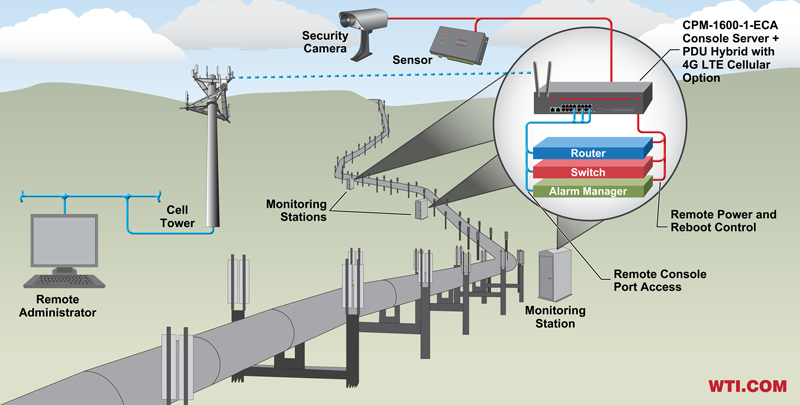Managing Network Devices at Remote Pipeline Monitoring Stations
Managing Network Devices at Remote Pipeline Monitoring Stations
In the petroleum industry and in civic infrastructure, large industrial pipelines essentially serve as the circulatory system of the industry. If this circulatory system fails or shuts down, then often the corporate endeavor that it serves also fails; just as we humans fail when our circulatory system shuts down.

It doesn’t matter if the pipeline is carrying drinking water or crude oil; large commercial pipelines require constant monitoring and maintenance to ensure structural integrity and pipeline security. In order to make certain that pipelines are mechanically sound and free of potential problems, monitoring stations are typically installed at regular intervals in the pipeline to check conditions such as pipeline pressure, leakage, developing corrosion, unacceptably high or low temperatures and other factors. In many pipeline applications, these monitoring stations will also include security devices such as CCTV, sensors and other security monitoring apparatus to help guard the pipeline from unauthorized intruders.
In most cases, the sensors and security equipment at each pipeline monitoring station are linked to a central control facility using an Ethernet LAN backbone (typically a hard cable connection or satellite network.) This allows administrators at the control facility to easily monitor pipeline conditions at hundreds of separate pipeline monitoring stations and effectively dispatch tech teams to address any problems that might arise.
This works well under ideal conditions, but if the primary in-band connection fails or if inclement weather makes satellite communication unviable, then a 4G LTE cellular broadband network often provides the only workable alternative for back-up, out-of-band communication with remote pipeline monitoring stations.
In this case, remote administrators and IT support personnel can connect to the network at the remote pipeline monitoring station via 4G LTE cellular broadband in order to restore communication with the primary network using tools such as a serial console server or switched PDU installed at the monitoring station. Since rack space is often fairly cramped at these remote monitoring stations, a device, such as a CPM-1600-1-ECA Console Server + PDU Combo with WTI's 4G LTE Cellular Option can provide the ideal solution, by allowing both access to console port functions on remote devices, plus remote control of power switching and reboot functions. In pipeline monitoring applications that rely on DC power, a WTI RPC Remote DC Power Switch and DSM-40DC-E GigE Serial Console Server with the 4G LTE Cellular Option can be employed to provide out-of-band management capabilities.
Request a free demo
WTI products can be demo'd through any of the following options: